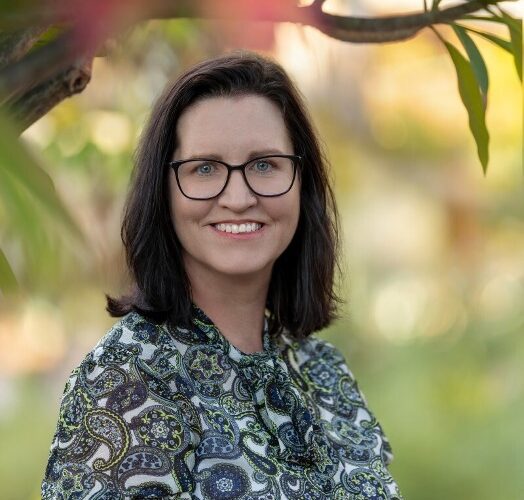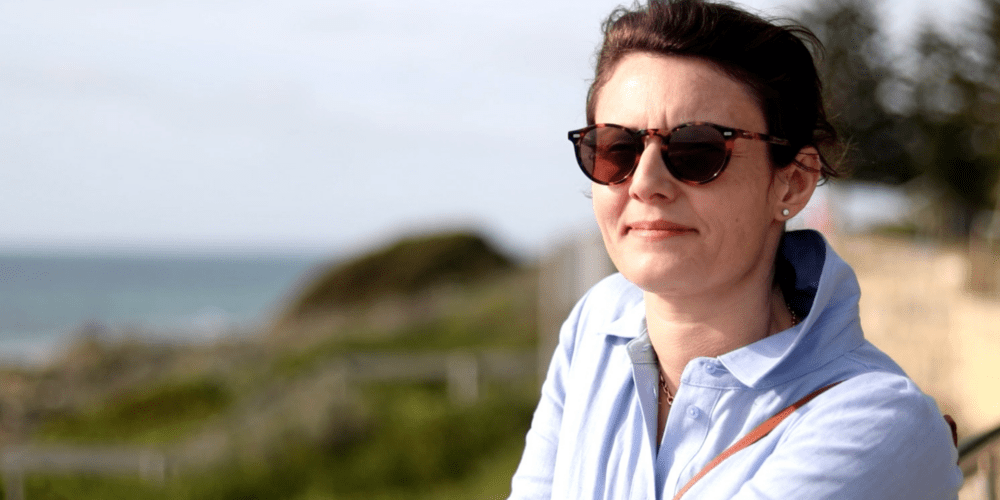Talking screens: A new era of inclusive TV

The next time you’re watching an episode of your favourite show, close your eyes for a moment and just listen.
This is how almost half a million Australians who live with blindness or vision impairment experience television.
But with audio description, the scenes come alive with detail.
Audio description provides descriptive narration of key visual elements of a program such as gestures, movements, and scene transitions. Like closed captions, audio description can be turned on and off through your television settings, but until recently, it wasn’t even available for Australian viewers of free-to-air television.
Curtin University Professor Katie Ellis from the School of Media, Creative Arts and Social Inquiry said having the option of audio description means more than simply being able to watch a nightly episode of Masterchef.
“Television has shaped our lives in so many ways. While some people think of it as just entertainment, for many, it’s a vital source of information, learning and being able to participate in cultural life.
Having full access to this medium is something sighted viewers take for granted.”
“Audio description gives blind and vision impaired people the chance to fully experience what’s playing out on the screen without relying solely on a show’s dialogue or a friend to describe it for them. It promotes independence and greater social inclusion.”
“There’s been almost 30 years of advocacy to get Australia up to global standards but we’re starting to hit real milestones now.”
Disability and digital media research
Audio description has been around for years – in film, live performance, video on-demand (VOD) and on television screens across many countries. For example, the UK where audio description is available on all broadcast television. Australia, however, lags behind the rest of the English-speaking OCED countries in their offering of audio description services on free-to-air television. It was a problem Professor Ellis recognised through her early work in disability representation.

Photo: Professor Katie Ellis from the School of Media, Creative Arts and Social Inquiry (MACSI)
Professor Ellis, who is also the convenor of the Curtin Critical Disability Studies Network, is a leading expert on disability and media, and a passionate advocate of inclusive and accessible digital services.
She said the switchover to digital television and rise of VOD services is when audio description research really took strides.
In 2015, she secured funding through the Australian Communications Action Network (ACCAN) to investigate what consumers with disabilities were looking for in VOD, such as Netflix and Stan. This was the first Australian study to examine disability access to VOD services.
At the time, VOD services were relatively new to the Australian television landscape – only 52% of people surveyed were subscribed to one.
Netflix entered the market without audio description but introduced the feature not long after, making it the first and only provider to offer the ongoing service to Australian viewers (on selected titled only).
While this was a welcomed option for the blind community, as a subscription service, VOD still presented obvious cost barriers. The study concluded that free-to-air television was where they needed and wanted audio description the most. This was what helped push Professor Ellis further into audio description research.
“What we heard from consumers is that they want audio description where it’s most accessible to them,” Professor Ellis said.
“VOD services are not something everyone can afford, or what they necessarily want to spend their money on. And at the end of the day, you shouldn’t need to pay for equal access to television.”
Bringing audio description to Australian television
The real challenge was breaking through the broadcast industry.
“When I first started my research, I would only talk to the blind community about the absence of audio description,” Professor Ellis said.
“Once we got industry involved, that’s when we started to see our academic work translated into real world benefits.”
In 2017, following the success of two audio description trials by the ABC, the Federal Government convened the Audio Description Working Group (ADWG) to explore options for increasing audio description services on Australian screens. Professor Ellis and fellow Curtin Professor Mike Kent were the only two academics in the working group. Their long-standing work into disability and digital media helped inform the final report which identified three possible options for the delivery of audio description: broadcast television, online platform, or a separate audio description service like an app that could sync an audio track.
Four years later, audio description finally made its way onto Australian screens thanks to a funding injection from the Federal Government.
Public broadcasters ABC and SBS received $2 million to launch audio description services for 14 hours of live TV coverage each week.
They remain the only two free-to-air channels to offer audio description in Australia.
Beyond audio description
Audio description is just one way that digital media can improve the lives of people living with a disability.
Earlier this year, Professor Ellis and her team were awarded more than $1 million in Australian Research Council (ARC), as part of the Mid-Career Industry Fellowships Program.
They’ll be collaborating with industry partner, the Centre for Inclusive Design, to investigate how digital media can be made more inclusive and accessible using insights from the COVID-19 pandemic.
“It’s great to see services like audio description becoming more available but it’s just one part of the journey to digital inclusion,” Professor Ellis said.
“We’ll work closely with people with disability to better understand their experience and the challenges they face in navigating the digital world.”
—
Find out more about audio description in Australia.



